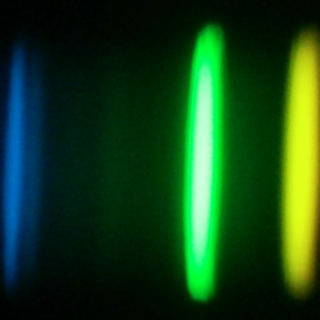Bibcode
Chiappini, C.; Anders, F.; Rodrigues, T. S.; Miglio, A.; Montalbán, J.; Mosser, B.; Girardi, L.; Valentini, M.; Noels, A.; Morel, T.; Minchev, I.; Steinmetz, M.; Santiago, B. X.; Schultheis, M.; Martig, M.; da Costa, L. N.; Maia, M. A. G.; Allende Prieto, C.; de Assis Peralta, R.; Hekker, S.; Themeßl, N.; Kallinger, T.; García, R. A.; Mathur, S.; Baudin, F.; Beers, T. C.; Cunha, K.; Harding, P.; Holtzman, J.; Majewski, S.; Mészáros, Sz.; Nidever, D.; Pan, K.; Schiavon, R. P.; Shetrone, M. D.; Schneider, D. P.; Stassun, K.
Referencia bibliográfica
Astronomy and Astrophysics, Volume 576, id.L12, 7 pp.
Fecha de publicación:
4
2015
Revista
Número de citas
172
Número de citas referidas
161
Descripción
We report the discovery of a group of apparently young CoRoT red-giant
stars exhibiting enhanced [α/Fe] abundance ratios (as determined
from APOGEE spectra) with respect to solar values. Their existence is
not explained bystandard chemical evolution models of the Milky Way, and
shows that the chemical-enrichment history of the Galactic disc is more
complex. We find similar stars in previously published samples for which
isochrone-ages could be reliably obtained, although in smaller relative
numbers. This might explain why these stars have not previously received
attention. The young [α/Fe]-rich stars are much more numerous in
the CoRoT-APOGEE (CoRoGEE) inner-field sample than in any other
high-resolution sample available at present because only CoRoGEE can
explore the inner-disc regions and provide ages for its field stars. The
kinematic properties of the young [α/Fe]-rich stars are not
clearly thick-disc like, despite their rather large distances from the
Galactic mid-plane. Our tentative interpretation of these and previous
intriguing observations in the Milky Way is that these stars were formed
close to the end of the Galactic bar, near corotation - a region where
gas can be kept inert for longer times than in other regions that are
more frequently shocked by the passage of spiral arms. Moreover, this is
where the mass return from older inner-disc stellar generations is
expected to be highest (according to an inside-out disc-formation
scenario), which additionally dilutes the in-situ gas. Other
possibilities to explain these observations (e.g., a recent
gas-accretion event) are also discussed.
Appendix A is available in electronic form at http://www.aanda.org
Proyectos relacionados

Abundancias Químicas en Estrellas
La espectroscopía de estrellas nos permite determinar las propiedades y composiciones químicas de las mismas. A partir de esta información para estrellas de diferente edad en la Vía Láctea es posible reconstruir la evolución química de la Galaxia, así como el origen de los elementos más pesados que el boro, forjados principalmente en los interiores
Carlos
Allende Prieto